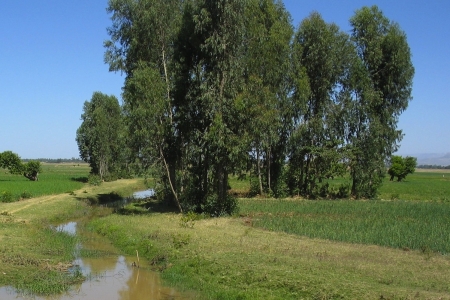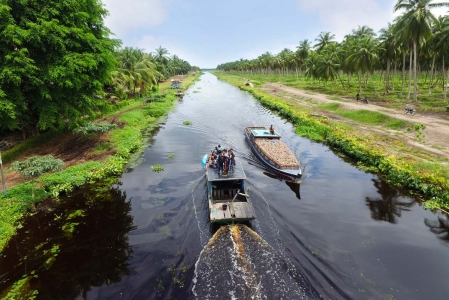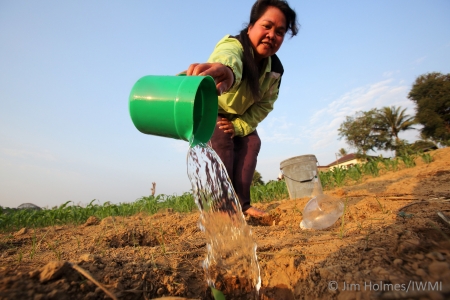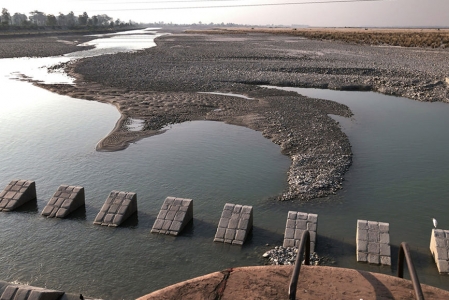Manythong Siharath is worried. The wetland she depends on for her livelihood is changing and changing fast!
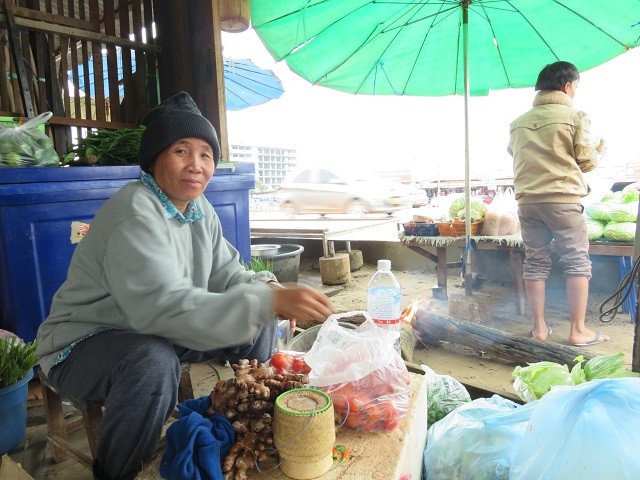
Manythong is 50 years old and has four children. She has relied on the That Luang Marsh, on the outskirts of Vientiane, the capital of Laos, for the past 30 years. In the monsoon season she catches fish from it and in the dry season, when the flood recedes, she grows vegetables in it. As well as consuming some, she sells both fish and vegetables at a nearby market. Her livelihood is totally dependent on the marsh and until recently she could make enough money to support her family.
However, in recent years the fishing has become a lot harder. Manythong says, “the fish is not even enough for home consumption. There are not many fish and the fish are small. No one is fishing in the wetland like before”. She continues to grow vegetables but without the wet season fish her income has dropped significantly.
The That Luang wetland covers an area approximately 20km2. There are 17 villages, over 7,000 households and nearly 38,000 people located around it. Many of these people rely on the wetland for their livelihoods. A study conducted in 2004, estimated the economic value of the wetland at just under US$ 5 million, with more than a million of that attributable to fisheries. The wetland also plays an important role in flood mitigation, climate regulation, and treatment of wastewater discharged into it from the city.
The wetland has been altered significantly in recent years as a result of urban encroachment, expansion of agricultural areas and the construction of a “central canal”, intended to facilitate dry season irrigation. More recently, a consortium of Laos and Chinese companies has begun developing the marsh as a new town, comprising houses and urban development.
Without detailed studies it is impossible to quantify the impact of these changes on the wetland and the range of goods and services that it provides. However, it is beyond doubt that they are altering the ecological character of the wetland and seemingly undermining the livelihoods of those people that depend on it.
Changing weather patterns may also be contributing to change. As Manythong herself speculates, the lack of fish might in part be due to low water levels. “Especially, last year, the water level was very low throughout the year. There was not much rain.”
Globally wetlands are disappearing fast, succumbing to a range of development pressures. It is estimated that 64% of wetlands have disappeared since 1900, most converted to agriculture or buried beneath the concrete of urban expansion. With rates of economic development accelerating and the impacts of climate change increasingly felt, the pressures on wetlands are greater than ever. The irony is that as they disappear those left become increasingly important and more and more valuable.
In the future planning and management must take into account the full range of values that wetlands provide. It is essential that peoples’ livelihoods and wellbeing are properly considered. Wise decision-making must ensure that people like Manythong and her family benefit from development and are certainly not adversely affected as a consequence of ill-considered impacts on wetlands.




